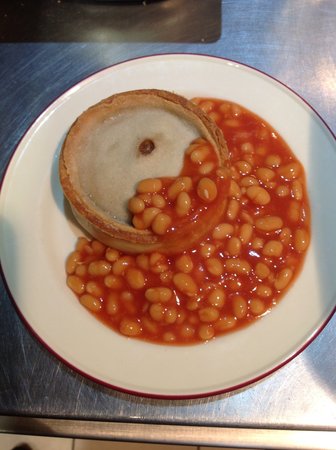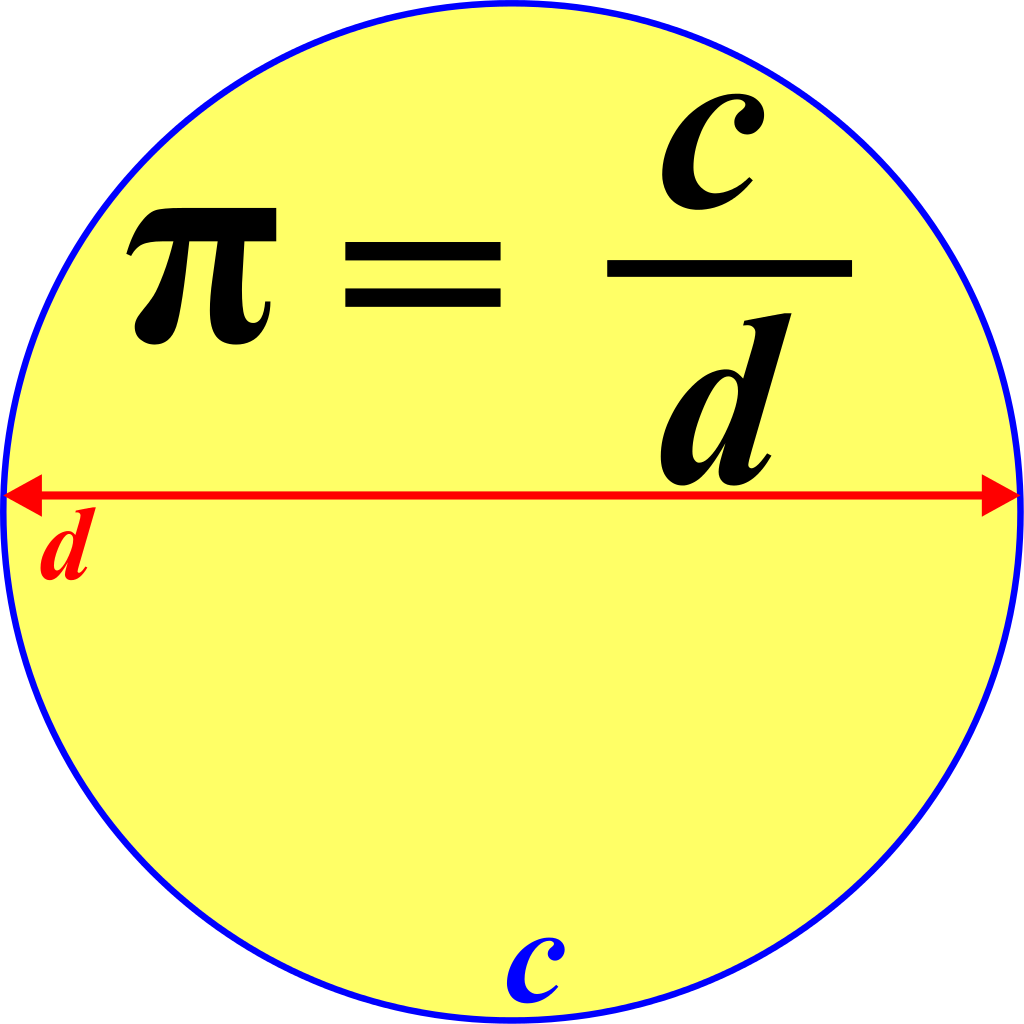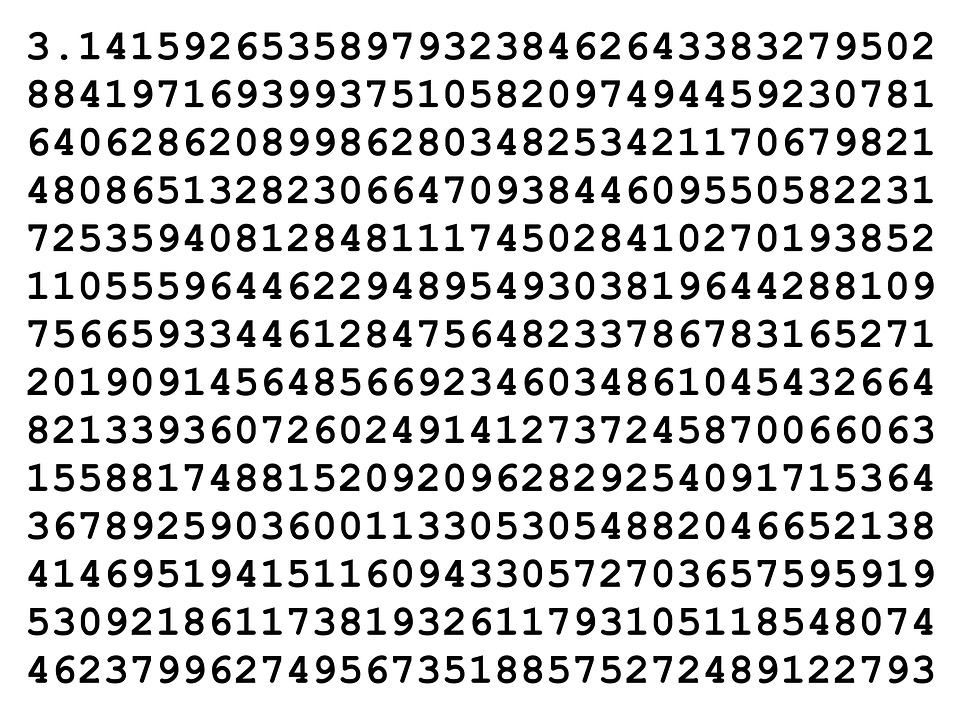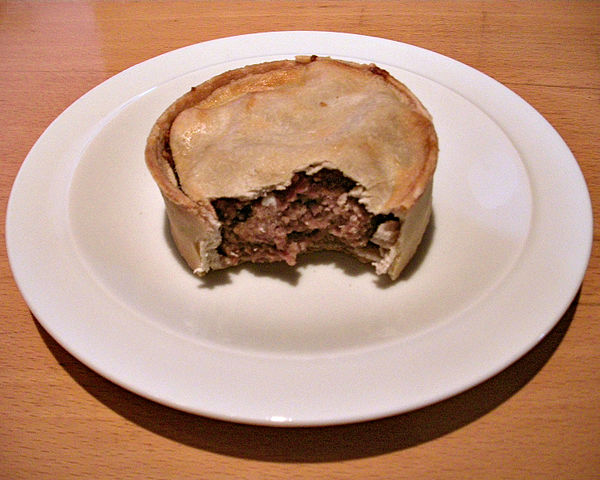In honor of Pi Day, or what we call Scotch Pie Day here at the Kilted Dad, I bring you a short post on the Scotch Pie.
Scotch Pie
Scotch Pie is a small double-crusted meat pie filled with minced mutton or other meats. It is similar in nature to the steak pie, the steak and kidney pie, or the steak and tattie (potato) pie. The mutton or other meat filling is often highly spiced with specific recipes  usually being kept secret. The shell of hot water crust is usually baked in straight-sided pans and the sides often rise higher than the top crust to allow for an accompaniment such as gravy, beans (my favorite), or an egg to be placed on top.
usually being kept secret. The shell of hot water crust is usually baked in straight-sided pans and the sides often rise higher than the top crust to allow for an accompaniment such as gravy, beans (my favorite), or an egg to be placed on top.
Scotch pies are believed to have originated in Scotland, hence the name Scotch Pie, but can be found throughout the United Kingdom, Canada, and at Highland Games everywhere. They are typical take-away fare (that means fast food in the UK) since the hard crust means they can be eaten without wrapper or utensils.
A Recipe for Scotch Pie
Thanks to Gordon Hamilton and Delishably for this Scotch Pie Recipe – it’s what my family will be having for dinner tonight:
Ingredients
½ lb minced (ground) lamb
½ tsp spice (your choice – typically nutmeg or mace)
Salt and pepper
½ lb plain/all-purpose flour
3oz lard
3 fl oz water
4 tbsp lamb stock (or gravy)
Butter to grease pie cases
A little bit of milk to glaze
Step by Step Guide to Making Scotch Pies
- Get your oven preheating to 375F/190C.
- Put the minced lamb in to a bowl and add the rosemary. Season with salt and pepper. The easiest way to mix it to ensure even distribution of the seasonings is with your hand.
- Put the water and the roughly cut lard in to a small saucepan and gently heat until the lard is melted.
- Lightly grease your foil cases with butter.
- Add the flour to a warmed bowl with about half a teaspoon of salt. Stir to combine and form a well in the center, in to which the water and melted lard should be poured.
- Stir with a wooden spoon to form a dough and divide in to four equal portions. Sit the bowl on top of a pot of very hot water to keep the pastry warm and pliable.
- Clingfilm has been used to cover the board on which the pastry is going to be rolled. It makes it much easier to lift the pastry once it’s rolled. Take the first piece of dough and pull off a quarter of it. Roll the two pieces in to balls.
- Lightly flour a rolling pin and roll out the larger ball until it is big enough to cut a circle with your larger template.
- Carefully lay the pastry in a foil dish and press it gently in to place. Trim off the excess around the edges with a sharp knife.
- Fill the pie two-thirds of the way up with the lamb, pressing down but not compacting it too firmly. Add a tablespoon of lamb stock.
- Roll out the smaller ball until you can cut the lid with the smaller template. Press it lightly in place.
- Repeat with the next three pies.
- Sit the pies on a baking tray and glaze with milk. Cut a small steam vent in the center.
- Put the pies in to the oven for thirty minutes.
- Take the pies from the oven and use a spatula to lift them to a wire rack. Rest for fifteen minutes before lifting carefully from the foil cases.
- Enjoy with your chosen accompaniment like fries and/or beans. If beans, be sure to pour them over the top of the pie for best effect.
The Real Pi and Pi Day
The real Pi Day is celebrated annually on March 14th (3/14) in honor of the mathematical constant Pi, which is often represented by the Greek Letter π.
 As I’m sure we all learned way back when in school, Pi represents the ratio of a circle’s circumference to its diameter. Just in case you’ve forgotten (since most of us have no practical, daily use for this bit of knowledge) the diameter is the measurement of a circle from side to side through the center and circumference is the measure around the outside of a circle. As a constant number, meaning that pi is the same for all circles of any size.
As I’m sure we all learned way back when in school, Pi represents the ratio of a circle’s circumference to its diameter. Just in case you’ve forgotten (since most of us have no practical, daily use for this bit of knowledge) the diameter is the measurement of a circle from side to side through the center and circumference is the measure around the outside of a circle. As a constant number, meaning that pi is the same for all circles of any size.
The symbol “π” was first used in 1706 by William Jones. A ‘p’ was chosen for ‘perimeter’ of circles, and the use of π became popular after being adopted by the Swiss mathematician  Leonhard Euler in 1737. In recent years, Pi has been calculated to over one trillion digits beyond the decimal point. Because Pi is an irrational and transcendental number, it will continue indefinitely without a pattern, developing a whole hobby called piphilology around calculating or memorizing as many digits as possible. See the image at right for a start.
Leonhard Euler in 1737. In recent years, Pi has been calculated to over one trillion digits beyond the decimal point. Because Pi is an irrational and transcendental number, it will continue indefinitely without a pattern, developing a whole hobby called piphilology around calculating or memorizing as many digits as possible. See the image at right for a start.
Happy Scotch Pie Day!
